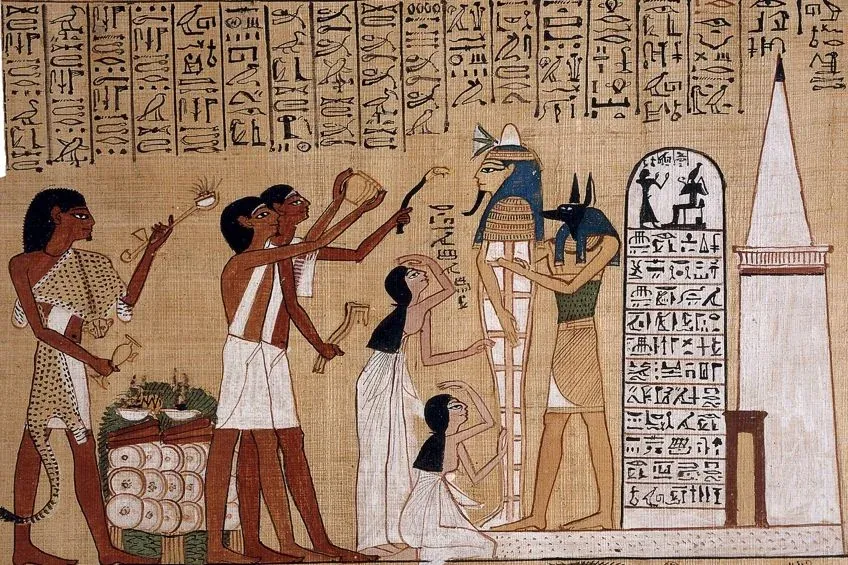The Timeless Magic of Ancient Egyptian Paint. A Testament to Endurance
In the vast tapestry of history, few civilizations shine as brightly as ancient Egypt. Their legacy, woven with pyramids and hieroglyphs, holds a treasure trove of wonders. Among these marvels lies a secret: their mastery of paint.


Long before modern chemistry, Egyptian artists crafted a paint that defied time. Using minerals, plants, and animal products, they blended vibrant hues. Malachite lent its intense green, while hematite provided a deep red. Their secret? A mix of waxes, resins, and oils, ensuring durability and radiance.

Let's delve into the fascinating world of their paint production, exploring the materials used and the secrets behind its remarkable preservation.

Natural ingredients played a central role in the creation of Egyptian paint. Artisans sourced pigments from minerals like malachite (for green), hematite (for red), and azurite (for blue), which were ground into fine powders to produce vivid colors. Plants such as saffron and indigo provided additional hues, while charcoal contributed to black pigments.

To bind these pigments together and adhere them to surfaces, Egyptians utilized organic substances. Egg whites, extracted from eggs laid by domestic fowl, served as a crucial binder, providing adhesion and flexibility to the paint layers. Gum arabic, derived from the sap of the acacia tree, was another common binder known for its adhesive properties.

The longevity of Egyptian paint can be attributed to the careful selection of materials and the addition of certain additives. Waxes, resins, and oils were incorporated into the paint mixture to enhance durability and impart a glossy finish. These additives not only protected the pigments from environmental factors but also contributed to the paint's resilience over time.

Before applying paint, Egyptian craftsmen meticulously prepared surfaces to ensure optimal adhesion and longevity. Walls and surfaces were smoothed and coated with layers of plaster, providing a stable foundation for the paint layers. This preparation minimized moisture infiltration and prevented degradation, preserving the integrity of the artwork for centuries.

Beyond their technical prowess, Egyptian paintings held profound cultural and religious significance. Depicting scenes from mythology, daily life, and the afterlife, these artworks were revered as sacred portals to the divine. They were meticulously maintained and protected by successive generations, ensuring their survival against the ravages of time and neglect.

In essence, the enduring legacy of ancient Egyptian paint is a testament to the ingenuity, craftsmanship, and reverence of a civilization that valued art as a conduit to eternity. When other ancient pigments faded, theirs endured setting them apart.






